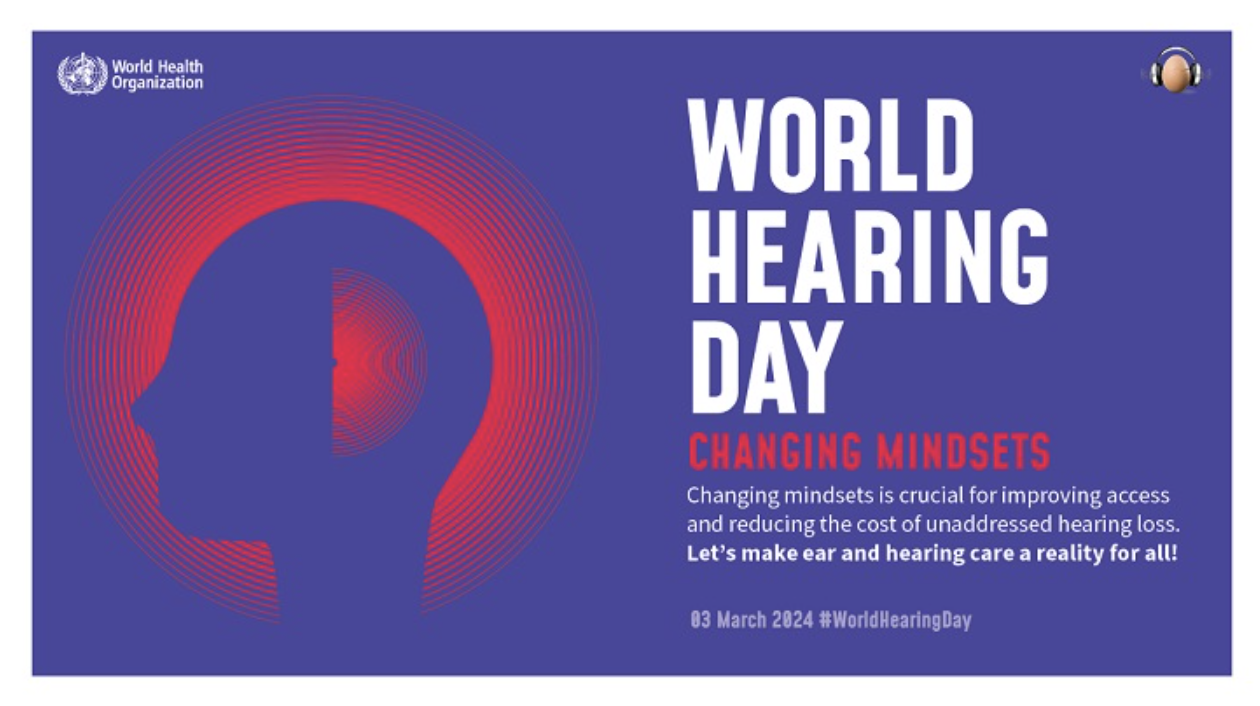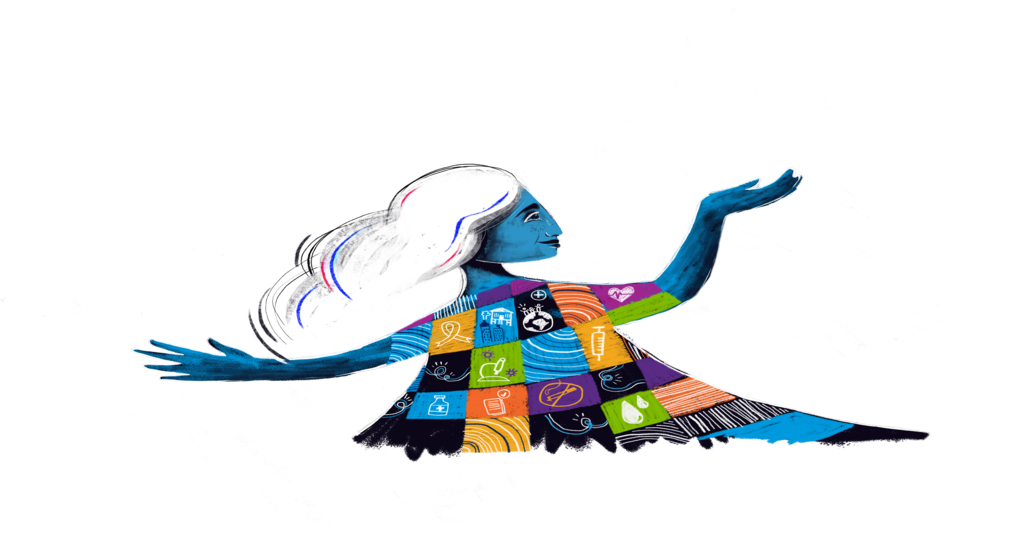
Deaf Culture and the Arts in the UK
September 25, 2021
Ask Anna: What is the best FM system for schools?
September 27, 2021Deaf refugees and human rights in times of crisis

This month we’re celebrating Deaf Awareness Month, an initiative of the World Federation of the Deaf (WFD), which corresponds with International Week of the Deaf People 2021. Today, Sept. 26, the theme is “Human Rights in Times of Crisis.”
Most of us in the Western world are aware of the current refugee crisis that is ever increasing in the Middle East and European countries. Whether it is conflict and violence causing humanitarian crisis, or climate change creating droughts and natural disasters, millions of human beings are being forced to flee their homes.
Human Rights in Time of Crisis
“The past year has shown us new needs and new ways of guaranteeing the well-being of deaf people in situations of crisis,” says the WFD. “Under the circumstance of different crises, including infectious diseases, climate change, natural disasters, and armed conflict, deaf people all over the world experience language deprivation, socioeconomic disadvantages, and audism.”
“The past year has shown us new needs and new ways of guaranteeing the well-being of deaf people in situations of crisis.”
At the end of 2020, a UNHCF data report announced there are now 82.4 million people forcibly displaced worldwide, with 26.4 million of these being refugees. Approximately 68 percent of refugees originate from just five countries, with Syria being the recorded as the highest, with 6.7 million people now forced from their homes. Venezuela, Afghanistan, South Sudan, and Myanmar follow Syria as the leading countries that have hit crisis level of displacement. With the current crisis happening in Afghanistan, we can expect to see their numbers rise significantly.
The United Nations published an article this year which stated that forced displacement is now at a record high and shows no signs of slowing down anytime soon, despite the Covid-19 pandemic that restricted global movement. The findings came from the Global Trends Report, which revealed that more than 1 percent of the entire world population, or to put it into a slightly more sobering perspective, 1 in 95 people, are now forcibly displaced. This has increased from 2010 when it was 1 in 159.
Deaf Refugees
It is unknown how much of the percentage of refugees are deaf. In fact, there is very little existing data or statistical research carried out on deaf refugees, or first accounts on their experiences of displacement gathered online and in the press.
When a community finds themselves in a humanitarian crisis, often the immediate priorities are water and food distribution, organizing medical care for the wounded, and securing warm clothing and safe shelter. Amidst the fear and chaos that permeates these hostile environments, it is easy to see how deaf refugees may find themselves overlooked. If something isn’t considered essential emergency aid, then a response is not usually given in these climates that focus on delivering basic needs and services.
A critical review carried out by researcher Kate Mcauliff finds that most research carried out on deaf refugees concerns deaf children. She believes this is due to resources and documentation provided by systems such as education, social services and non-government organizations (NGO) prioritizing humanitarian aid to Ddeaf children over adults.
According to UNHCR, refugees with hearing loss “often face stigma and discrimination in their communities. They can encounter multiple environmental, communication and social barriers when accessing services and assistance, and face a greater risk of protection concerns including violence and exploitation.”
One UNHCF worker explained that “in particular, women and girls with disabilities may face a disproportionate risk of GBV (gender based violence)… Due to their specific needs, they may also face social exclusion from their peers and experience isolation in their homes.” When people are unable to access services, they are powerless in understanding what they’re entitled to and what rights they have.
Read more: 3 Ways to Prepare for an Emergency as a Deaf Person
Deaf Rights in Times of Crisis
Although legislations are in place, deaf rights are largely ignored in underdeveloped nations. The World Federation for the Deaf (WFD) states that “Human rights are universal, indivisible and interconnected. They belong to all people, regardless of gender, national or ethnic origin, colour, religion, language, or any other status such as disability or deafness. Unfortunately, due to societal prejudices and incorrect assumptions, deaf people’s rights are often overlooked or denied – especially in developing countries.”
But deaf refugees are not alone. There are people around the world who have created organizations built from compassion and concern for the welfare of this marginalized community. People who are working to be a voice for the displaced, fighting for their rights to be recognized and for action to be taken.
Read more: Syrian refugees get hearing aids, hope from Deaf-led nonprofit
Global Rights for People with Disabilities
The United Nations of Convention of Rights for People with Disabilities (CRPD) was adopted in 2006 and provides an international framework which outlines the actions we need to take in order to improve the rights of disabled people globally. The text came into force in May 2007, and has a total of 50 articles, all of which aim to protect the rights of deaf people.
Eight of the largest organizations for individuals with disabilities were invited to take part in the process of writing the CRPD, including the World Federation of the Deaf. Their involvement led to five articles being dedicated to the concern of deaf rights. In it, they discuss sign language rights, Deaf Culture and linguistic identity, equal employment opportunities and accessibility.
Without sign language, Deaf people are not equal, according to the WFD. To achieve deaf equality, governments have to grant deaf immigrants equal access to information and services to that of the hearing world. Sign language allows Deaf people to receive an education, find employment, access services and to be a functioning and contributing member of society.
Read more: Learn some things about Sign Language
Deaf Refugee Children’s Rights
In 2016, the WFD and other major hearing organizations wrote to the Committee on the Rights of the Child and the Committee on Migrant Workers, and put forward their submission for comment on the rights of deaf refugee children. In the article they refer to the specific areas of the CPRD that outlined the most importance of rights for deaf children and stated that “this applies equally to deaf child migrants, irrespective of their place of residence.”
The rights were as follows:
- Learn and use sign language (Art. 21)
- Give and receive information in official interactions in sign language (Art. 21)
- Attend school and learn in an accessible environment to maximize academic and social development
(Art. 9, Art. 24) - Receive reasonable accommodation to promote equality and eliminate discrimination (Art. 5)
- Receive early identification and early intervention and assistance services (such as sign language
teaching and specialist assistance) (Art. 25(b)) - Have a decent standard of living and social protection – including access to affordable services, devices
and other assistance for disability needs, including sign language interpreters (Art. 28) - Be free from torture, cruel degrading or inhuman practices and freedom from exploitation violence and
abuse (Art. 15, Art. 16). - Participate in social, cultural activities and sport on an equal basis with others (Art. 30)
They also stated that “children have the right to communicate in the sign language of their choice – e.g. at home, and to learn the host country’s national sign language to integrate into their local community and access services.”
The organizations outlined their strong believe that Deaf children are fully entitled to the right of developing a “cultural and linguistic identity based off sign language.” More so, they should be given the support that allows them to become proud of this identity.
Organisations should work with national, and international bodies that ensure sign language rights for all deaf children regardless of location, nationalities, and resources.
Learning to Sign in New Countries
Even when people manage to make it to safety and are granted refuge in a new country, their battle is a far cry from over.
In 2017, The Independent and Refugee Action covered stories on Deaf refugee Ahmad, who spent his career teaching Arabic sign language to children in the Aleppo, the city in Syria he is from. Ahmad was forced to flee with his family after his mother-in-law was killed in an airstrike and their home was destroyed. He spent six years in Lebanon, which he said was unbearable for Deaf people. Finally, he arrived in the UK in June 2017, with Arabic sign language being all he knew. He soon realized their new home was going to present a myriad of barriers that would be complicated to navigate. His language, which had once made him a living, was not held in the same respect here.
“People with disabilities are accepted in the UK,” he told The Independent. “But you must learn BSL to communicate and find your place in society. I still don’t feel confident enough to work. But with time, I will learn how to sign in English and I hope that one day, I will be able to help other deaf people learn how to sign as well.”
According to research by Refugee Action, thanks to funding cuts, colleges don’t possess the funds needed to meet the high demand for sign language classes. As a result, refugees are placed on a waiting list as long as three years before they’re able to start learning English and make their way in UK society. This is leaving Deaf Refugees isolated.
A Refugee Action caseworker helped Ahmad find the deaf cultural centre BID, a charity whose head office is based in Birmingham in the UK. He started learning BSL.
Read more: Sign languages around the world
Helping Deaf Refugees
Fortunately, deaf advocates all over the world want to help and are working to prevent deaf refugees from being left displaced and alone. Working in noisy humanitarian environments when you have hearing loss yourself presents its own barriers. But that’s exactly what hard of hearing UNHCR worker Judith Chan decided she had to do. When she joined the UN Refugee Agency in 2011, she was given the task of teaching deaf and hard of hearing refugees in camps in Nepal. Her students included deaf refugees that had never learned sign language, how to read and write, or how to communicate.
Because of her first hand experience living with a hearing disability, she was able to empathize and help deaf refugees. “From my own experience as a person with a hearing disability, I recognized many of the frustrations and barriers that refugees encountered because I too faced these,” Chan told Farha Bhoyroo, a UNHCR communications offer. “Without a means to communicate, we rediscovered just how important language is. It allows us to make sense of our world and enables us to communicate our wants, needs, desires and feelings.” She spent three months learning Nepalese sign language.
Chan also helped to create the pilot Alternative and Augmentative Communication (AAC) toolkit. AAC covers a huge range of techniques which support, or replace, spoken communication.
These include:
- Gestures
- Signing
- Symbols
- Word boards
- Communication boards
- Books
- Voice Output Communication Aids (VOCAs) Communication Matters
“AAC is a set of tools and strategies that an individual uses to solve everyday communicative challenges,” Chan told the UNHCR Communication member. “I can take many forms such as: speech, a shared glance, text, gestures, facial expressions, touch, sign language, symbols, pictures, speech-generating devices, etc.”
Chan and her team used photography and collected items from around the camps that they could use as a visual teaching aids. “Effective communication occurs when the intent and meaning of one individual is understood by another person,” she says.
“Effective communication occurs when the intent and meaning of one individual is understood by another person.”
The AAC toolkit allowed Judith’s team to communicate with refugees who had disabilities and carry out protection and resettlement interviews with them. The toolkit was a huge success and has since been used by partners, refugees and UNHCR field staff. It has proved of great importance as it has even empowered Deaf refugees to report GBV incidents and access services that are essential to their well being, she says.
There are also other organizations that have been built with the aim of bringing deaf refugees out of the shadows and helping them to find connection.
Hear the World Foundation
The UNFCH estimates that there are currently 1.5 million refugees in Lebanon. Syrian refugees are banned from working and receive no accommodation, healthcare, or financial support from the state. This means they must rely on support provided by aid organizations. For deaf Syrian children, the only way to receive healthcare is to wait for aid to come to them. A lot of Syrian children are at risk of losing their hearing from acoustic trauma caused by bombings, and if caused at the same time as they’re fleeing their home, they might be arriving in Lebanon newly deaf without any means of assistance.
The Hear the World Foundation, a corporate nonprofit foundation founded by Sonova Group, which owns the Phonak hearing aid brand, created the #HearLebanon project. In 2017, they teamed up with Houri Hearing, a hearing aid store in Beruit and worked together to cooperate with deaf schools throughout Lebanon to diagnose 100 deaf children in need of healthcare. Hear the World volunteers examined the children and then professional hearing tests were conducted.
Impressions were taken for personal earmolds. When they were ready, Hear the World volunteers once again travelled to Beirut with the new Phonak hearing aids to give the children. Apryl Sweat, a member of the Hear the World Foundations explains that the hearing aids “help these children to integrate into the new culture and the new location. Being able to hear helps them to feel that they belong and enables them to interact with their new environment.” The aids help the children navigate their new surroundings and give them confidence in an unfamiliar environment.
The children were also visited by Phonak ambassador Jason Brügger. He used his own experiences and life lessons from his hearing loss to inspire the children through a circus workshop with the aim of improving their balance and build self-esteem in their abilities.
The foundation and Houri Hearing have continued working together to arrange suitable care for the children, and offer them hope for the future.
A Better Future for Deaf Refugees
Researcher Kate McAuliff writes from her findings that “Humanitarian organizations and institutions make strides in the inclusion of refugees with disabilities and advocate for their needs and narratives which are often ignored or marginalized by other institutions.” Although charities and NGOs are making a positive difference, we can’t make true change without involvement from governments. A lot of information given to us by the government regarding refugees is fear mongering and misleading.
When addressing the fear that people feel surrounding refugee overpopulation and their “invasion” of their country, Amnesty International explains that “The people are not the problem.” The problem is we should be tackling displacement by addressing the causes that force these families across borders in the desperate attempt to save their lives in the first place, and governments’ poor responses to them. Eighty six percent of all refugees are hosted in developing countries. Turkey hosts the largest number of people with 3.7 million, followed by Colombia, Pakistan, Uganda, and then Germany. Raising awareness on social media and making refugees feel welcomed after the trauma so many have endured is essential in helping them to resettle and connect with their new home.
The humanitarian work we’re seeing around the world has made significant improvement to the lives of deaf refugees. While the fight for deaf refugee rights remains a long winding battle, donating what we can to organizations and writing to politicians and putting pressure on the government to take action is the best place to start when looking at how we can help the crisis.
Read more: Human Rights for the Deaf
If you’re worried about what to write to your government, many websites provide templates on how you can structure your letter.
Refugee Action provides one here.
You have the power to prevent human beings from drifting alone in silence. Use it.




